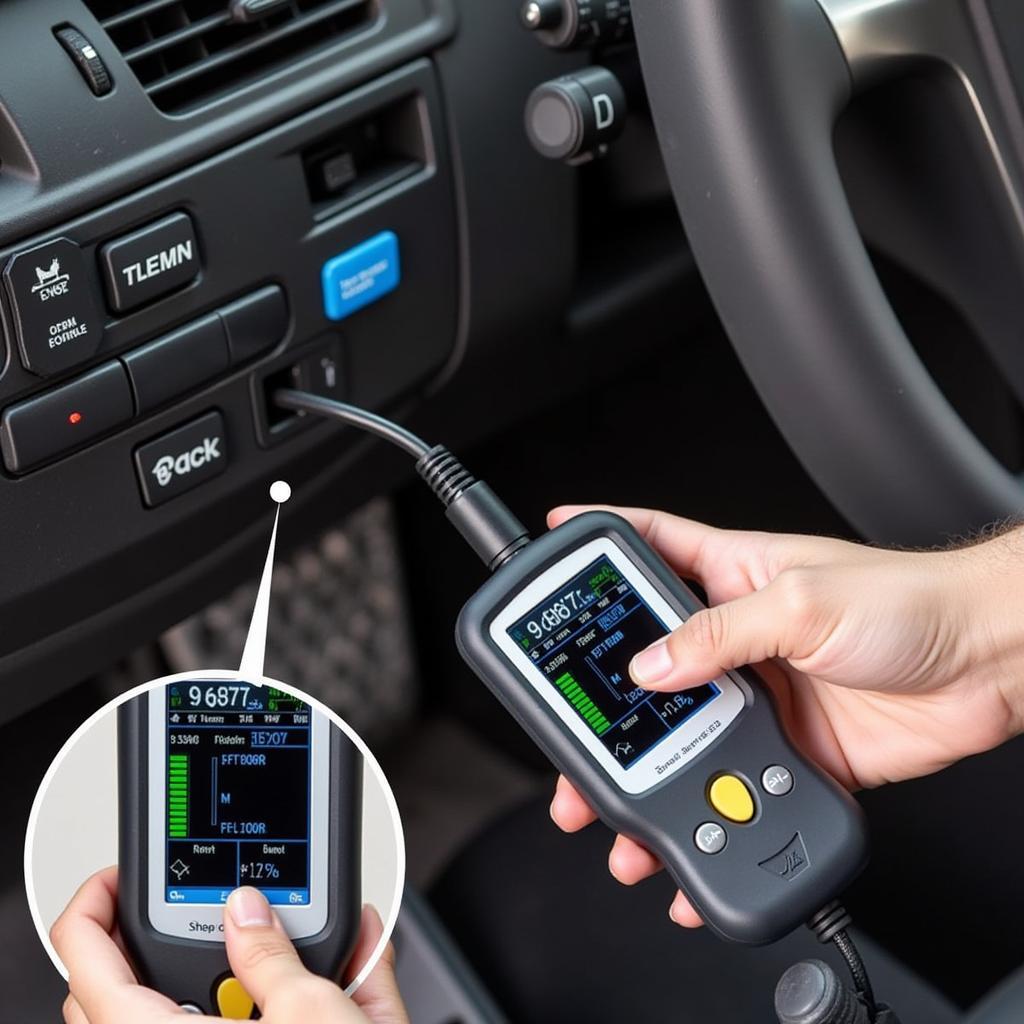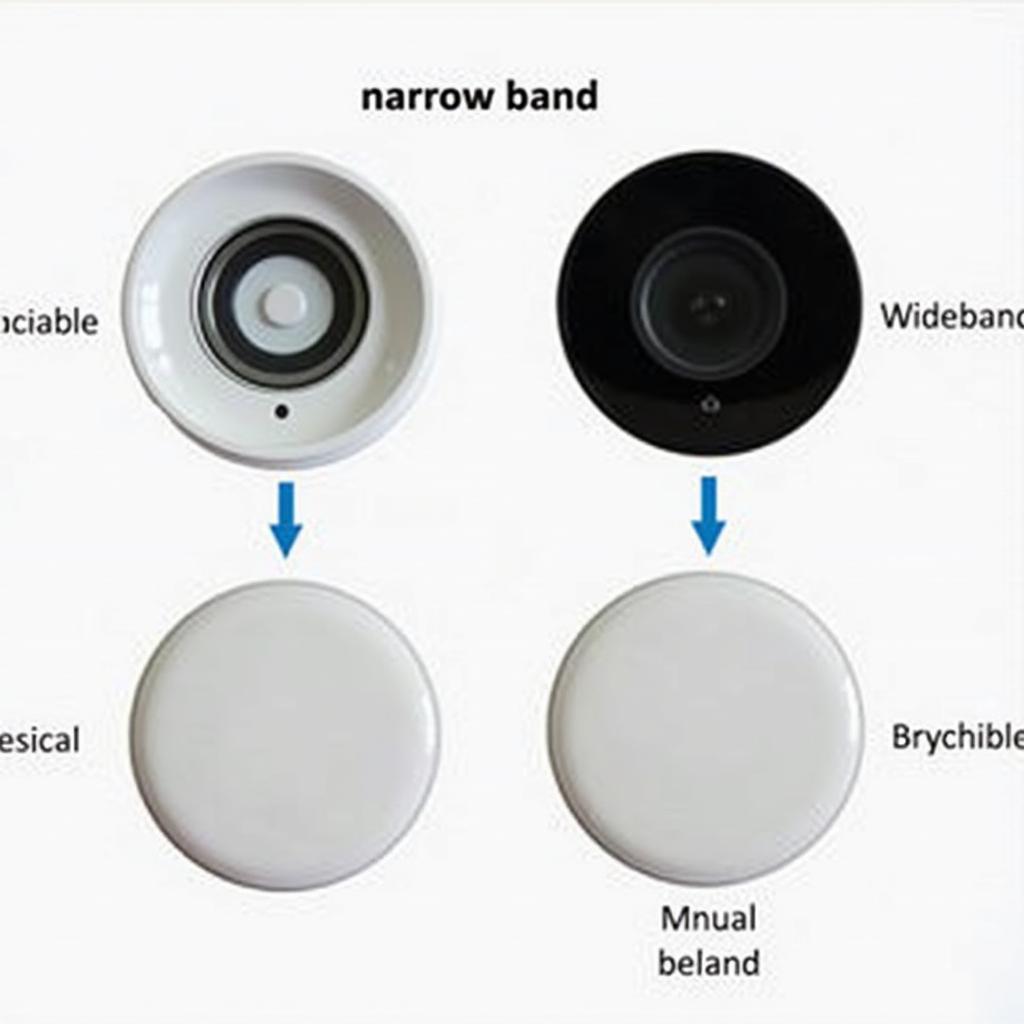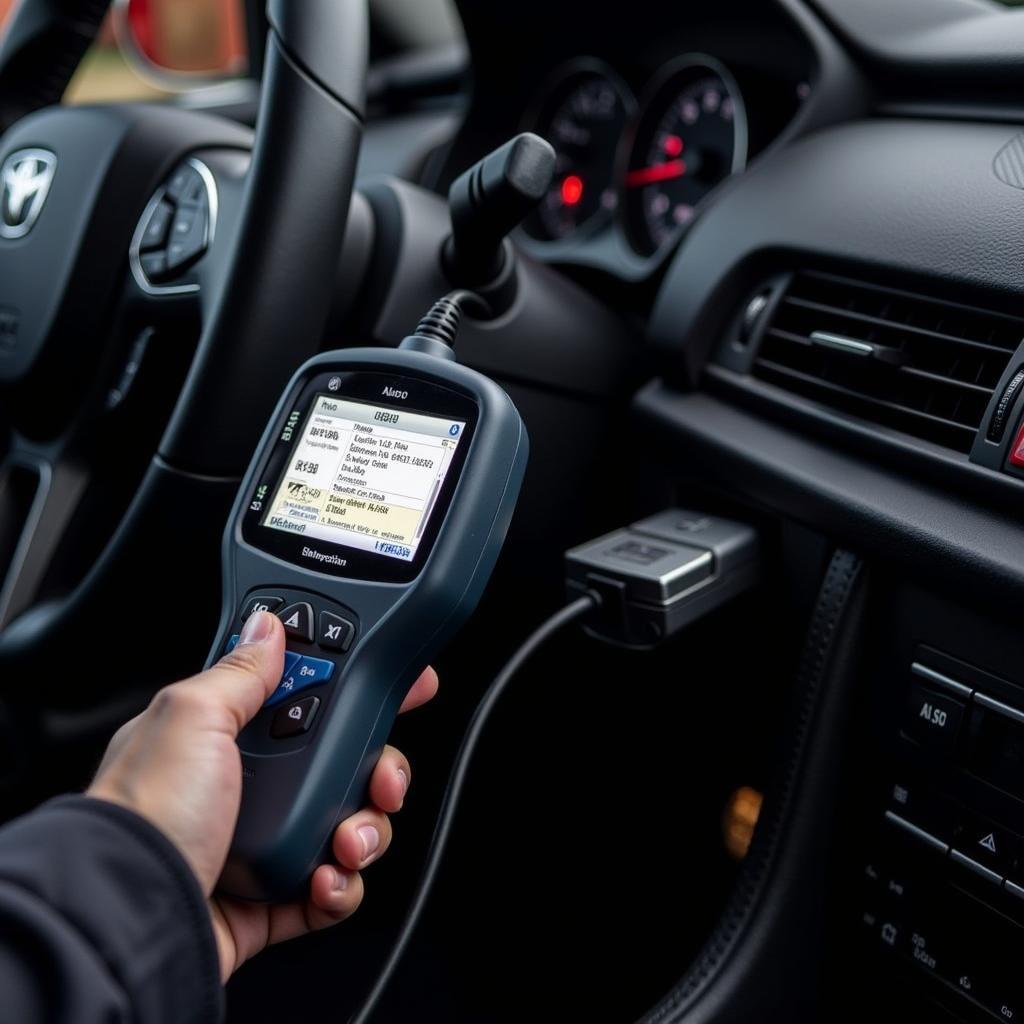In the realm of automotive diagnostics, understanding the air/fuel ratio of your engine is paramount to ensuring optimal performance, fuel efficiency, and minimizing emissions. This is where an Air/fuel Ratio Diagnostic Tool steps into the picture. These invaluable tools provide a window into the heart of your engine’s combustion process, allowing you to pinpoint and address issues that might be robbing your vehicle of its full potential.
This comprehensive guide delves into the world of air/fuel ratio diagnostic tools, exploring their functionalities, benefits, and how they can be leveraged for accurate diagnoses and effective repairs.
 Mechanic using an air/fuel ratio diagnostic tool on a car engine
Mechanic using an air/fuel ratio diagnostic tool on a car engine
What is an Air/Fuel Ratio Diagnostic Tool?
An air/fuel ratio diagnostic tool, in essence, is a specialized device that measures the ratio of air to fuel being drawn into your engine’s combustion chamber. This ratio is critical because it directly impacts the efficiency and completeness of the combustion process. A lean mixture, characterized by more air than fuel, can lead to increased NOx emissions and potential engine damage. Conversely, a rich mixture, with more fuel than air, can result in reduced fuel efficiency, increased carbon monoxide emissions, and potential damage to catalytic converters.
These diagnostic tools come in various forms, from handheld devices to sophisticated software integrated with academic diagnostic tools. Regardless of their form, they provide invaluable insights into your engine’s behavior, enabling you to:
- Diagnose engine problems: Identify issues such as faulty oxygen sensors, malfunctioning fuel injectors, or vacuum leaks that can disrupt the air/fuel ratio.
- Optimize fuel efficiency: Achieve the ideal air/fuel mixture for your specific engine, leading to significant improvements in fuel economy.
- Reduce emissions: Ensure compliance with environmental regulations by maintaining an air/fuel ratio that minimizes harmful emissions.
- Enhance engine performance: An optimal air/fuel ratio translates to improved horsepower, torque, and overall engine responsiveness.
How do Air/Fuel Ratio Diagnostic Tools Work?
Most modern vehicles utilize oxygen sensors, strategically positioned in the exhaust system, to monitor the air/fuel ratio. These sensors send signals to the Engine Control Unit (ECU), the brain of your car’s engine management system. The ECU, in turn, adjusts the fuel delivery and ignition timing to maintain the optimal air/fuel ratio.
Air/fuel ratio diagnostic tools tap into this communication network, primarily through the vehicle’s OBD-II port. This allows them to access real-time data from the oxygen sensors, providing you with a clear picture of your engine’s air/fuel mixture.
Types of Air/Fuel Ratio Diagnostic Tools
There are primarily two types of air/fuel ratio diagnostic tools available:
-
Narrowband Sensors: These are commonly found in older vehicles and offer a basic level of monitoring. They provide a general indication of whether the air/fuel mixture is rich or lean but lack the precision of wideband sensors.
-
Wideband Sensors: These advanced sensors offer a much wider range of readings, delivering highly accurate and detailed information about the air/fuel ratio. This makes them ideal for diagnostic purposes, performance tuning, and real-time monitoring of engine parameters.
 A variety of air/fuel ratio sensors, showcasing both narrowband and wideband options.
A variety of air/fuel ratio sensors, showcasing both narrowband and wideband options.
Choosing the Right Air/Fuel Ratio Diagnostic Tool
Selecting the right air/fuel ratio diagnostic tool depends largely on your specific needs and the type of vehicle you own.
-
DIY Enthusiasts: For basic diagnostics and monitoring, an affordable handheld OBD-II scanner with air/fuel ratio reading capabilities might suffice. These plug-and-play devices are user-friendly and offer a cost-effective solution.
-
Professional Mechanics: Mechanics and technicians often require more advanced tools with comprehensive diagnostic capabilities. Software-based solutions, often integrated with motorcycle computer diagnostic tools or marine diagnostics tools, provide in-depth data analysis, troubleshooting guides, and advanced features for a wider range of vehicles.
Interpreting Air/Fuel Ratio Readings
Understanding the readings provided by your diagnostic tool is crucial. The air/fuel ratio is typically represented by a numerical value, often referred to as lambda (λ).
- Lambda (λ) = 1.00: This indicates a stoichiometric air/fuel ratio, the ideal balance for most gasoline engines.
- Lambda (λ) < 1.00: A reading below 1.00 indicates a rich mixture, meaning there is more fuel than air.
- Lambda (λ) > 1.00: A reading above 1.00 indicates a lean mixture, with more air than fuel.
Benefits of Using an Air/Fuel Ratio Diagnostic Tool
Investing in an air/fuel ratio diagnostic tool can offer a multitude of benefits:
- Early Problem Detection: Identifying minor air/fuel ratio imbalances early on can prevent them from escalating into major engine problems.
- Cost Savings: Optimizing your engine’s air/fuel ratio can lead to significant savings on fuel costs over time.
- Reduced Emissions: Maintaining a balanced air/fuel mixture minimizes harmful emissions, contributing to a cleaner environment.
- Enhanced Engine Life: Avoiding prolonged periods of running rich or lean can significantly extend the lifespan of your engine and its components.
“A well-maintained air/fuel ratio is akin to a healthy diet for your engine,” says John Miller, a seasoned automotive engineer with over two decades of experience. “It ensures optimal performance, longevity, and minimizes the risk of costly repairs down the line.”
Conclusion
Air/fuel ratio diagnostic tools are essential for anyone looking to understand, maintain, and optimize their vehicle’s engine performance. From DIY enthusiasts to professional mechanics, these tools provide invaluable insights into the combustion process, enabling accurate diagnoses and effective solutions for a wide range of engine-related issues.
For expert advice and assistance with selecting the right air/fuel ratio diagnostic tool for your needs, feel free to contact the specialists at ScanToolUS at +1 (641) 206-8880 or visit our office located at 1615 S Laramie Ave, Cicero, IL 60804, USA.

